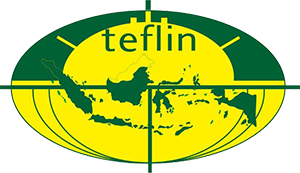Mini Research of Mandarin Oriental Singapore’s Commercial Text among New Students: A Commercial Material Development
Abstract
This article mainly explores Mandarin Oriental Singapore’s Commercial Text among New Students: A Commercial Material Developments. This study uses participatory action research (PAR). The result indicates that
commercial texts in the classroom student had autonomy in making a decision on particular lexico-grammatical resources they need to learn more or discuss with their pair, small group, and whole class discussion. They learn not only by locally produced materials but also commercial materials. These commercial materials drove them drawing on observation and reflective data, as the students engaged in meaning-making activities, they analyzed a variety of texts they read and shared the outcome of the analysis with their peers. This meaning-making engagement allowed them to understand and interpret texts in new and varied ways (Hodgson-Drysdale, 2014) so that relationship between content and language was evident.
Keywords
Full Text:
PDFReferences
Epstein, E. (2010). Materials for adult learners of English. In H.P. Widodo & L. Savova, The Lincom guide to materials design in ELT. Muenchen, Germany:Lincom Europa
Guerrettaz, A.M.,& Johnston, B. (2013). Materials in the classroom ecology. The Modern Language Journal, 97, 779-796.
Hall,D. (2010). Consumer-designer frameworks for materials writing In H.P. Widodo & L. Savova, The Lincom guide to materials design in ELT (pp.21-30). Muenchen, Germany:Lincom Europa.
Harwood, N. (2010). (Ed.). English Language Teaching materials: Theory and Practice. Cambridge:Cambridge University Press.
Hodgson-Drysdale, T. Concepts and Language: Developing Knowledge in Science. Linguistics and Education, 27, 54-67.
Hutchinson, T.,& Waters, (1987). A. English for Specific Purposes: A Learning-centred Approach. Cambridge: Cambridge University Press.
Ilma, Z & Pratama, R. K. (2015). Transformation in Indonesian Language Curriculum: Prosand Cons between KTSP 2006 and Curriculum 2013 in Indonesia.International Conference on Trends in Economics, Humanities, and Management (ICTEHM'15) March 27-28, Singapore
Kemmis,K. (2009). Action Research as a Practice-based Practice. Educational Action Research, 17, 463-474.
LaBelle, J.T. (2011). Selecting ELL Textbook: A content analysis of language-teaching models. Bilingual Research Journal, 34, 94-110.
Mishan, F. (2005).Designing Authenticity into Language Learning Materials. Bristol, UK:Intellect Books.
Tomlinson, B. (2008). Language acquisition, and Language LEarning Materials. In B. Tomlinson (Ed.), English Language Teaching Materials: A Critical Review, London:Bloomsbury.
Tomlinson, (2012) B. Materials development for language learning and teaching.Language Teaching, 45, 143-179.
Widodo, H.P.,& Savova, L. (2010). The Lincom guide to materials design in ELT. Muenchen, Germany: Lincom Europa.
DOI: http://dx.doi.org/10.21043/jetli.v1i2.5086
Refbacks
- There are currently no refbacks.
Copyright (c) 2019 Journal of English Teaching and Learning Issues







